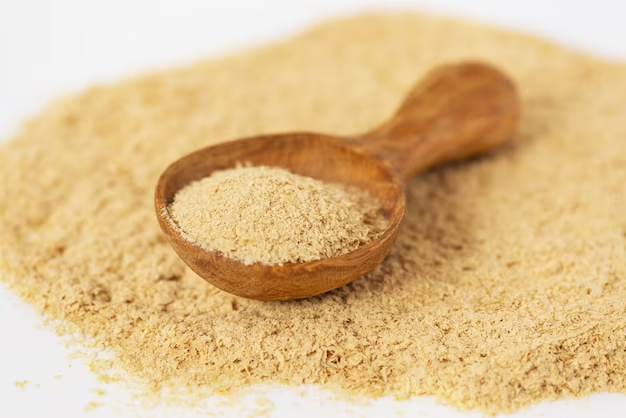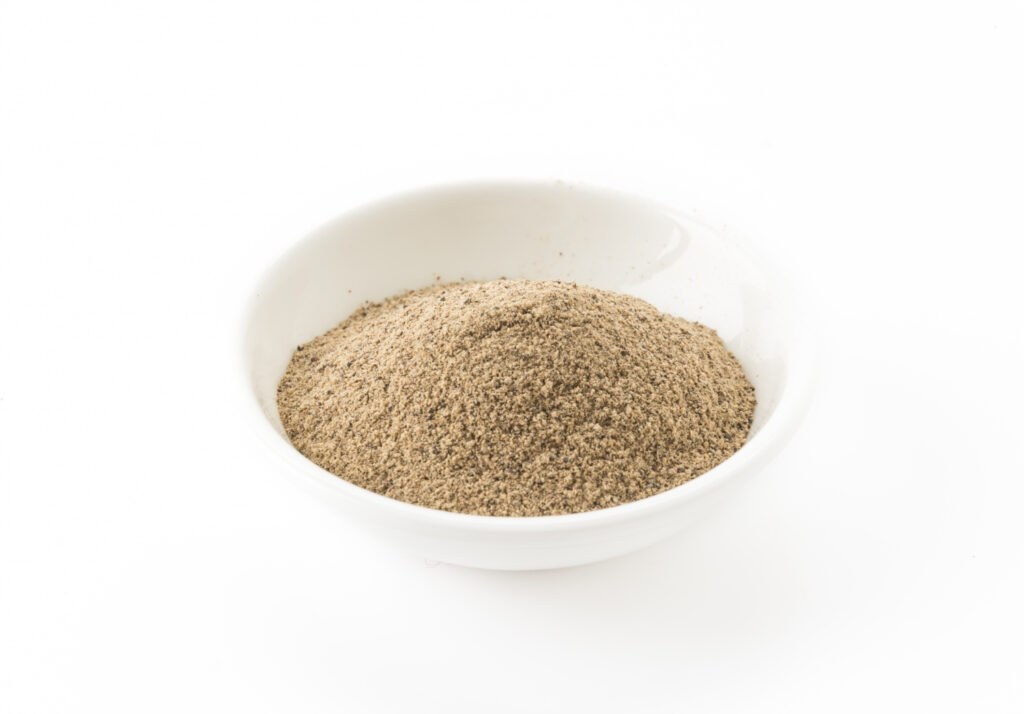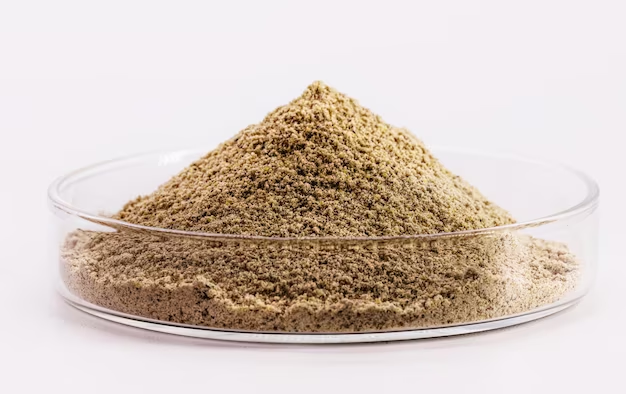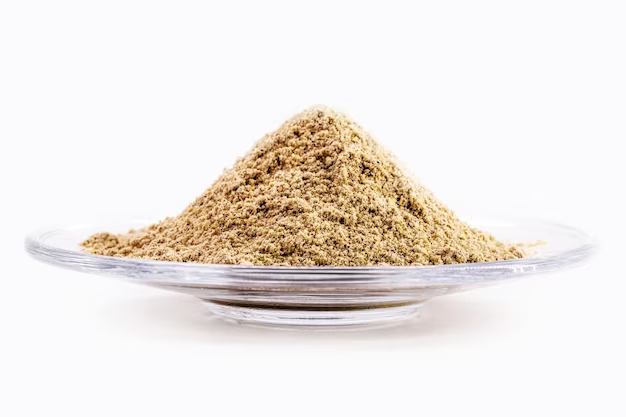I love to make a variety of bake, but I’ve learned the hard way that using the wrong amount of yeast can make or break a recipe. That’s why understanding “How much yeast is in a packet” is crucial for successful baking. It can be confusing to determine the right quantity, especially when different brands offer varying packet sizes.
In this comprehensive article, I’ll be sharing my personal experience and the cooking tips I’ve learned along the way to help you perfect your yeast usage and avoid common mistakes. Whether you’re a beginner or an experienced baker, this guide will help you perfect your yeast usage and elevate your baking game.
What is yeast?

Yeast is a single-celled fungus that is commonly used in baking to help dough rise and develop a fluffy texture. It is a crucial ingredient in bread making and other baked goods, as it provides carbon dioxide gas during fermentation, which causes the dough to expand and rise.
Yeast packets are a convenient and easy way to add yeast to your baking recipes. They typically contain a pre-measured amount of yeast and are a common choice for home bakers. Different types of yeast packets are available, including active dry yeast and instant yeast, which have different properties and require different preparation methods.
There are several types of yeast used in baking, including baker’s yeast, brewer’s yeast, and nutritional yeast, each with their unique properties and uses. For example, baker’s yeast is the most commonly used type in bread making and comes in different forms such as fresh, active dry, or instant yeast.
Yeast works by consuming sugars in the dough and producing carbon dioxide gas, which creates air pockets that make bread rise and develop a soft texture. The yeast also contributes to the flavor and aroma of baked goods.
The importance of yeast in bread making cannot be overstated. Without yeast, bread would be dense and flat, lacking the light, airy texture that we all love. Proper understanding and use of yeast is essential for achieving success in baking and making delicious, fluffy baked goods.
What is a yeast packet?
A yeast packet is a small package of pre-measured yeast that is commonly used in baking recipes. Yeast packets are designed to simplify the process of adding yeast to recipes by providing a pre-measured amount, which eliminates the need to measure out yeast manually.
The purpose of yeast packets is to ensure accurate and consistent yeast measurements in baking recipes. By using pre-measured packets, bakers can avoid over or under-measuring yeast, which can lead to recipe failures.
There are different types of yeast packets available, including active dry yeast and instant yeast. Active dry yeast packets need to be activated in warm water before adding to the recipe, while instant yeast packets can be added directly to the dry ingredients.
One of the main differences between yeast packets and yeast jars is the amount of yeast they contain. Yeast packets typically contain smaller amounts of yeast compared to yeast jars, which can contain up to a pound of yeast. Yeast jars are generally more cost-effective for frequent bakers, while yeast packets are a more convenient option for occasional baking.
Additionally, yeast jars require bakers to measure out the yeast themselves, which can be more time-consuming and potentially lead to measurement errors.
How much yeast is in a packet?

The amount of yeast in a packet can vary depending on the brand and type of yeast. However, standard yeast packets typically contain 2 ¼ teaspoons (7 grams) of yeast. This is enough yeast to raise up to 4 cups of flour in a bread recipe.
Several factors can affect the amount of yeast in a packet, including the type of yeast and the brand. For example, some brands may offer larger or smaller packets of yeast, and different types of yeast may require different amounts for optimal results.
Understanding yeast measurements is essential for achieving successful baking results. Accurately measuring yeast is crucial for ensuring that your dough rises properly and that your baked goods turn out fluffy and delicious. Measuring yeast can be done using measuring spoons or kitchen scales.
Standard yeast packet sizes typically range from 7 to 8 grams of yeast. However, it is essential to check the label of the specific brand and type of yeast you are using, as the amount may vary.
Bakers should always follow the recipe’s instructions when adding yeast to their recipes, taking into account the recipe’s flour quantity, rising time, and desired results.
How much dry yeast is in a packet?
A standard packet of dry yeast typically contains 2 ¼ teaspoons (7 grams) of yeast. This is enough yeast to raise up to 4 cups of flour in a bread recipe. However, it is important to note that the amount of yeast in a packet can vary depending on the brand and type of yeast.
Some brands may offer larger or smaller packets of yeast, and different types of yeast may require different amounts for optimal results. When using yeast in a recipe, it is important to follow the recipe’s instructions for the specific amount and type of yeast required.
Measuring yeast accurately is crucial for achieving successful baking results, so it is recommended to use measuring spoons or kitchen scales to ensure the proper amount is used.
How much does a packet of yeast weigh?
The weight of a packet of yeast can vary depending on the brand and type of yeast. However, a standard packet of yeast typically weighs around 7 grams (0.25 ounces).
This is equivalent to 2 ¼ teaspoons of yeast. When using yeast in a recipe, it is important to follow the recipe’s instructions for the specific amount and type of yeast required.
How much yeast is in 2 packets?
The amount of yeast in 2 packets can vary depending on the brand and type of yeast. However, standard packets of yeast typically contain 2 ¼ teaspoons (7 grams) of yeast each.
So, 2 packets of yeast would contain a total of 4 ½ teaspoons (14 grams) of yeast. This would be enough yeast to raise up to 8 cups of flour in a bread recipe. When using yeast in a recipe, it is important to follow the recipe’s instructions for the specific amount and type of yeast required.
How to determine the right amount of yeast for your recipe?

Determining the right amount of yeast for your recipe is crucial for achieving successful baking results. Here are some tips on how to determine the right amount of yeast for your recipe:
Recipe considerations
Different recipes may require different amounts of yeast, depending on the type of dough, rising time, and desired results. It’s important to follow the recipe’s instructions and use the recommended amount of yeast.
Importance of measuring yeast accurately
Measuring yeast accurately is crucial for achieving the desired results in your baked goods. Too little yeast may result in dense, flat bread, while too much yeast may cause over-rising and a coarse texture. Use measuring spoons or kitchen scales to ensure the proper amount of yeast is used.
Calculating yeast quantity based on a recipe
Some recipes may not specify the amount of yeast needed, but rather the rising time. In this case, you can calculate the amount of yeast needed based on the recipe’s rising time and the amount of flour used. A good rule of thumb is to use 1/4 teaspoon (1 gram) of yeast for every 1 cup (125 grams) of flour used in the recipe.
See how we use yeast for our Vietnamese baguette recipe
Can you use partial yeast packets?
Yes, you can use partial yeast packets, but there are some factors to consider. Here are some tips on using partial yeast packets:
Factors to consider
When using partial yeast packets, it’s important to consider the age of the yeast and the amount you need for your recipe. Old yeast may not be as effective, so it’s best to use fresh yeast if possible. Additionally, when using partial packets, make sure to adjust the recipe accordingly to avoid over- or under-rising.
How to store unused yeast packets?
To store unused yeast packets, keep them in an airtight container or resealable bag in the refrigerator. This will help to keep the yeast fresh for longer.
Shelf life of unused yeast packets
The shelf life of unused yeast packets can vary depending on the brand and type of yeast. Generally, unopened yeast packets can last up to a year in the refrigerator or freezer. However, once opened, the yeast should be used within 4-6 months for best results.
Using partial yeast packets is possible, but it’s important to consider the age of the yeast and adjust the recipe accordingly. Unused yeast packets should be stored properly in the refrigerator or freezer to maintain freshness. Always check the expiration date and use fresh yeast for best results.
Comparing yeast packet brands
When it comes to selecting a yeast brand, there are several factors to consider. Here are some tips on comparing yeast packet brands:
Review of popular yeast brands
Some popular yeast brands include Fleischmann’s, Red Star, SAF, and Lesaffre. Each brand offers different types of yeast, including active dry yeast and instant yeast. Research the different brands and types of yeast to find the one that best suits your baking needs.
Factors to consider when selecting a yeast brand
When selecting a yeast brand, consider factors such as availability, cost, and convenience. Some brands may be more readily available or cost-effective than others, while some may offer unique features such as fast-acting or organic yeast.
Yeast packet quality and freshness
The quality and freshness of yeast packets can vary depending on the brand and type of yeast. Look for brands that offer a consistent quality of yeast and ensure that the packets are fresh and have not expired. Fresh yeast will have a distinct, yeasty smell and should dissolve easily in warm water.
What are alternatives to yeast packets?
While yeast packets are a convenient option for adding yeast to recipes, there are alternatives to consider. Here are some alternatives to yeast packets:
Fresh yeast
Fresh yeast, also known as cake yeast, comes in a block or cake form and must be refrigerated. It is highly perishable but has a more potent flavor and can be easier to use in recipes that require a longer rising time.
Instant yeast
Instant yeast, also known as rapid-rise yeast, can be added directly to dry ingredients and does not need to be activated in warm water. It is a good option for quick-rise bread recipes.
Sourdough starter
Sourdough starter is a naturally occurring yeast that is created by fermenting flour and water. It is a traditional method of baking that requires patience and skill, but can result in delicious, flavorful bread.
When comparing yeast packets to other forms of yeast, it’s important to consider the benefits and drawbacks of each. While yeast packets are convenient and easy to use, they may not be the best option for every recipe. Fresh yeast has a more potent flavor but is highly perishable, while instant yeast is a good option for quick-rise bread but may not be suitable for longer rising times.
Common mistakes when using yeast packets

Using yeast packets in baking can be tricky, and there are several common mistakes that can result in failed recipes. Here are some of the most common mistakes when using yeast packets:
Common mistakes when measuring yeast
Measuring yeast inaccurately can result in dough that does not rise properly. Some common mistakes when measuring yeast include using too much or too little yeast, not leveling off measuring spoons, and using old or expired yeast.
Mistakes in activating yeast
Activating yeast correctly is crucial for achieving successful baking results. Common mistakes when activating yeast include using water that is too hot or too cold, using old or expired yeast, and not allowing enough time for the yeast to activate before adding it to the dough.
Tips for avoiding common mistakes
Avoiding common mistakes when using yeast packets can help you achieve delicious, fluffy baked goods every time. Here are some tips for avoiding common mistakes:
- Measure Yeast Accurately: Use measuring spoons or a kitchen scale to measure yeast accurately. Always level off measuring spoons and avoid using too much or too little yeast.
- Use Fresh Yeast: Always check the expiration date and use fresh yeast for best results. Old or expired yeast may not activate properly and can result in dough that does not rise.
- Activate Yeast Correctly: Use warm water that is between 100-110°F (38-43°C) when activating yeast. Allow enough time for the yeast to foam and become active before adding to the dough.
- Avoid Salt: Avoid adding salt directly to the yeast, as it can inhibit the yeast’s ability to rise. Instead, add salt to the dry ingredients before adding the yeast.
- Follow Recipe Instructions: Follow the recipe’s instructions for the type and amount of yeast required. Consider the type of bread, rising time, and desired results to determine which type of yeast to use.
FAQs
Can I use expired yeast?
Expired yeast may not be as effective and may result in dough that does not rise properly. It’s best to use fresh yeast whenever possible. However, if you only have expired yeast available, you can try activating it to see if it is still active.
To do this, dissolve the yeast in warm water with a pinch of sugar and let it sit for a few minutes. If the yeast foams and becomes bubbly, it is still active and can be used in your recipe. However, if it does not foam or become bubbly, it may be best to discard it and use fresh yeast.
How do I activate yeast?
Activating yeast is crucial for achieving successful baking results. To activate the yeast, follow these steps:
- Warm Water: Use warm water that is between 100-110 °F (38-43 °C). Hot water can kill the yeast, while cold water may not activate it properly.
- Dissolve Yeast: Dissolve the yeast in warm water with a pinch of sugar. Stir gently to combine.
- Wait: Let the yeast mixture sit for 5–10 minutes, or until it becomes foamy and bubbly.
- Add to Dough: Once the yeast is activated, add it to your dough according to the recipe’s instructions.
Can I freeze yeast?
Yes, you can freeze yeast to extend its shelf life. To freeze yeast, divide it into portions and place it in airtight containers or resealable bags. Label the containers with the date and freeze them for up to 6 months.
When ready to use, thaw the yeast in the refrigerator overnight before using. It’s important to note that freezing and thawing yeast may affect its potency, so it’s best to use fresh yeast whenever possible.
Are all yeast packets the same size?
No, not all yeast packets are the same size. The most common sizes of yeast packets are 7 grams and ¼ oz, but some brands may offer different sizes.
What is the difference between active dry yeast and instant yeast?
Active dry yeast and instant yeast are two types of yeast that are commonly used in baking. The main difference between the two is the way they are processed.
- Active dry yeast is made by drying yeast cells and forming them into granules. It needs to be activated by dissolving it in warm water before adding it to the dough. This process takes 5-10 minutes and allows the yeast to become active before it is mixed into the dough.
- Instant yeast, on the other hand, is made by drying yeast cells and grinding them into a fine powder. It can be added directly to the dry ingredients and does not need to be activated in warm water. This makes it a convenient option for quick-rise bread recipes.
- Another difference between the two types of yeast is their shelf life. Active dry yeast has a longer shelf life than instant yeast, but needs to be stored in the refrigerator or freezer to maintain its freshness. Instant yeast can be stored at room temperature for a longer period of time.
Both active dry yeast and instant yeast can be used in a variety of recipes, but it’s important to follow the recipe’s instructions for the type and amount of yeast required.
Can I substitute one type of yeast for another?
Substituting one type of yeast for another can be done, but it’s important to note that different types of yeast have different properties and may affect the outcome of the recipe.
For example, active dry yeast requires activation in warm water, while instant yeast can be added directly to the dry ingredients. If you are substituting one type of yeast for another, it’s important to adjust the recipe accordingly and follow the instructions for the new type of yeast.
How do I know which type of yeast to use?
The type of yeast you use depends on the recipe and desired results. Active dry yeast and instant yeast are two of the most common types of yeast used in baking.
Active dry yeast is best for recipes that require a longer rising time, while instant yeast is a good option for quick-rise bread recipes. Sourdough starter is another type of yeast that is used in traditional bread making.
When selecting a type of yeast, consider the type of bread, rising time, and desired results. Follow the recipe’s instructions for the type and amount of yeast required, and adjust accordingly if using a different type of yeast. It’s important to note that different types of yeast have different properties, so substituting one type for another may affect the outcome of the recipe.
Can I add the yeast directly to the dry ingredients?
Yes, instant yeast can be added directly to dry ingredients and does not need to be activated in warm water. However, active dry yeast requires activation in warm water before it can be added to the dough.
How much yeast do I need for bread?
The amount of yeast needed for bread varies depending on the recipe and desired results. A general rule of thumb is to use 1-2 teaspoons of yeast for every 4 cups of flour.
However, it’s important to follow the recipe’s instructions for the type and amount of yeast required. Using too much yeast can result in a dough that rises too quickly and has a yeasty flavor, while using too little yeast can result in a dense, heavy bread.
Can I use yeast with gluten-free flour?
Yes, you can use yeast with gluten-free flour. However, gluten-free flours do not have the same properties as wheat flour, and may require additional ingredients such as xanthan gum or guar gum to help the dough rise properly.
When using yeast with gluten-free flour, it’s important to follow a recipe that has been specifically formulated for gluten-free baking, as the ratios of ingredients may be different from traditional wheat-based recipes.
Conclusion
With this in mind, understanding “How much yeast is in a packet” is a crucial aspect of successful baking. By following the tips and advice outlined in this article, you’ll be well on your way to perfecting your yeast measurements and achieving delicious, fluffy baked goods every time.
From choosing the right yeast brand to measuring accurately and avoiding common mistakes, we’ve covered all the essential information you need to know to become a yeast expert in your kitchen. So, the next time you’re whipping up a batch of bread or rolls, remember to consult this guide and achieve baking success with ease.